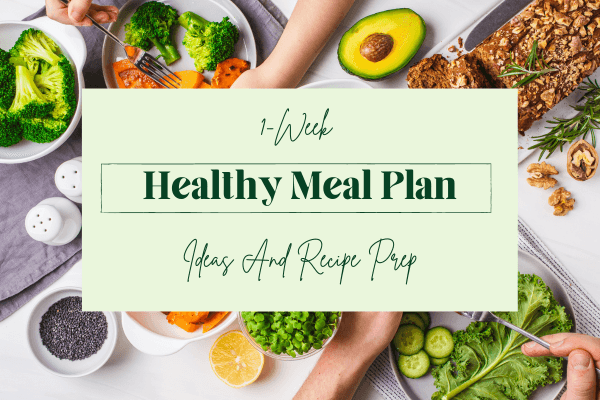Are you looking to shed some pounds, improve your blood sugar control, or simply adopt a healthier lifestyle? If so, you might have heard about low-carb diets as a way to achieve these goals. But what exactly is a low-carb diet, and how can you get started on one?
In this blog post, we'll explore the basics of low-carb diets, including what foods to eat and avoid, how many carbs to aim for, and what potential benefits and drawbacks to keep in mind. Whether you're a complete newbie to low-carb eating or looking to refresh your knowledge, you'll find useful tips and insights to help you succeed. So let's dive in and learn more about the low-carb lifestyle!

What is a low-carb diet?
A low-carb diet is a dietary approach that restricts the intake of carbohydrates, typically to less than 100 grams per day, and increases the consumption of protein and fat. The aim of a low-carb diet is to reduce the body's reliance on glucose (derived from carbohydrates) as a primary source of energy and promote the use of ketones (derived from fat) instead.
Some popular low-carb diets include the Atkins diet, the ketogenic diet, and the Paleo diet. Foods that are typically restricted or limited on a low-carb diet include sugar, grains, starchy vegetables, fruits, and some dairy products, while foods that are encouraged include meat, fish, eggs, non-starchy vegetables, nuts, and healthy fats such as olive oil and avocado.

Is a low-carb diet the same as a code red diet?
A low-carb diet and a Code Red diet have some similarities, but they are not the same.
A low-carb diet is a diet that restricts carbohydrates, which are found in foods such as bread, pasta, and sugar. The goal is to reduce the amount of glucose in the bloodstream, which can lead to weight loss and improved blood sugar control. Low-carb diets typically include foods such as meat, fish, eggs, vegetables, and healthy fats like avocado and olive oil.
A Code Red diet, on the other hand, is a specific type of low-carb diet that emphasizes whole, unprocessed foods and eliminates sugar, grains, and processed foods. The focus is on eating real, nutrient-dense foods like meat, fish, eggs, vegetables, nuts, and seeds.
So, while a Code Red diet is a type of low-carb diet, it is more specific in its approach and eliminates certain types of food. Both diets can lead to weight loss and improved health outcomes, but the Code Red diet is more restrictive and may not be suitable for everyone.

How can a low-carb diet help with weight loss?
A low-carb diet can be effective for weight loss in several ways:1) Reducing calorie intake: Low-carb diets often lead to reduced calorie intake because they eliminate many high-calorie, carbohydrate-rich foods such as bread, pasta, and sugary drinks. When you eat fewer calories than your body needs, it starts burning stored fat for energy, leading to weight loss.
2) Reducing insulin levels: Carbohydrates cause an increase in insulin levels, which promotes fat storage in the body. By reducing carbohydrate intake, you can lower insulin levels, which can help the body burn stored fat for energy.
3) Increasing protein intake: Low-carb diets often include more protein-rich foods such as meat, fish, and eggs. Protein has a higher thermic effect than carbohydrates, meaning your body burns more calories digesting protein than it does digesting carbohydrates. Additionally, protein helps you feel full for longer periods, reducing hunger and aiding in weight loss.
4) Reducing water weight: When you eat carbohydrates, your body stores some of it as glycogen in your muscles and liver. Each gram of glycogen is stored with 3-4 grams of water. When you reduce carbohydrate intake, your body uses up its glycogen stores and releases the water, leading to a significant reduction in water weight.
Overall, a low-carb diet can be an effective way to lose weight, but it's important to remember that everyone's body is different, and there is no one-size-fits-all approach to weight loss. It is important to fully acknowledge your body and seek guidance from a healthcare professional before starting any new diet or exercise program.

Getting started with a low-carb diet
If you are interested in starting a low-carb diet for weight loss, here are some tips to get started:- Choose the right foods: Focus on eating whole, nutrient-dense foods like meat, fish, eggs, vegetables, and healthy fats like olive oil, avocado, and nuts. Avoid processed foods, sugary drinks, and anything high in carbs.
- Set a daily carb limit: To enter ketosis, you will need to limit your carb intake to between 20-50 grams per day. Use an app or a food diary to track your carb intake.
- Plan your meals: Planning your meals in advance can help you stay on track with your low-carb diet. Make sure you have plenty of healthy low-carb foods on hand so that you are not tempted to reach for high-carb snacks.
- Drink plenty of water: Staying hydrated is important for weight loss and overall health. Drink at least 8 glasses of water a day to help flush out toxins and keep your body functioning properly.
- Be patient: It may take a few weeks for your body to adapt to a low-carb diet and enter ketosis. Be patient and stick with it – the results will be worth it!



